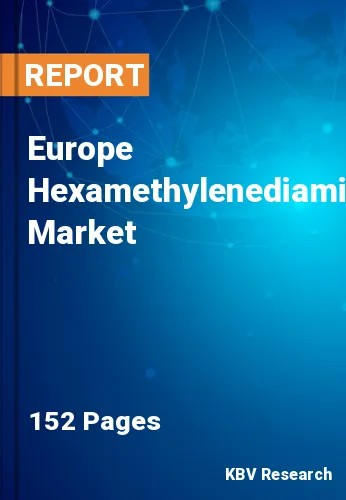The Europe Hexamethylenediamine Market would witness market growth of 5.3% CAGR during the forecast period (2023-2030). In the year 2020, the Europe market's volume surged to 456.46 Kilo Tonnes, showcasing a growth of 3.9% (2019-2022).
One notable trend in the market is the increasing emphasis on sustainable practices. With the growing awareness of environmental concerns, manufacturers are exploring eco-friendly production processes and alternative raw materials. Continuous research and development in chemistry and materials science have led to technological advancements impacting the market. The demand for customized products is a prevailing trend in the HMDA. Manufacturers are focusing on providing tailor-made solutions to meet the specific requirements of end-users. This customization may involve adjusting the molecular structure of HMDA to achieve the desired properties in the final product, catering to diverse industries and applications.
One of the primary applications of HMDA is in the production of nylon. HMDA, when combined with adipic acid, is a key intermediate in the synthesis of nylon 66. Nylon 66 is widely used in the textile industry for producing fibers and fabrics renowned for their strength, durability, and resistance to abrasion. The textile industry seeks high-performance materials for various applications, including apparel, industrial, and technical textiles. The growing athleisure trend and the demand for high-performance sportswear contribute to the increased use of nylon fibers in textiles. HMDA plays a crucial role in producing materials that meet the performance requirements of these applications.
The UK government invests over 160 million dollars in improving infrastructure and aiding local communities. The expenditure of £35.3 million for essential maintenance on the Tyne Bridge and adjacent Central Motorway, like enhancements to traffic management and cycle route facilities, will generate £130.5 million in economic benefits by enhancing local connectivity. The fashion industry in Germany can benefit from the use of HMDA in the production of innovative textiles. Advanced materials derived from HMDA can contribute to creating sustainable and high-performance fashion items that meet the evolving demands of consumers in the region. Due to the above-mentioned factors, the market will grow significantly in this region.
The Germany market dominated the Europe Hexamethylenediamine Market, by Country in 2022, and would continue to be a dominant market till 2030; thereby, achieving a market value of $767.9 Million by 2030. The UK market is exhibiting a CAGR of 4.3% during (2023 - 2030). Additionally, The France market would experience a CAGR of 6.1% during (2023 - 2030).
Based on End-use, the market is segmented into Automotive, Textile, Paint Coatings, Petrochemicals, and Others. Based on Application, the market is segmented into Nylon Synthesis, Curing Agents, Lubricants, Biocides, Intermediate for Coatings, Adhesives, Water Treatment Chemicals, and Others. Based on countries, the market is segmented into Germany, UK, France, Russia, Spain, Italy, and Rest of Europe.
Free Valuable Insights: The Global Hexamethylenediamine Market will Hit USD 13.5 Billion by 2030, at a CAGR of 5.5%
The market research report covers the analysis of key stake holders of the market. Key companies profiled in the report include BASF SE, DuPont de Nemours, Inc., Toray Industries, Inc., Merck KGaA, Asahi Kasei Corporation, Evonik Industries AG (RAG-Stiftung), Ashland, Inc., Koch Industries, Inc. (Invista BV), Ascend Performance Materials LLC and Lanxess AG
By End-use (Volume, Kilo Tonnes, USD Billion, 2019-2030)
By Application (Volume, Kilo Tonnes, USD Billion, 2019-2030)
By Country (Volume, Kilo Tonnes, USD Billion, 2019-2030)
Our team of dedicated experts can provide you with attractive expansion opportunities for your business.

